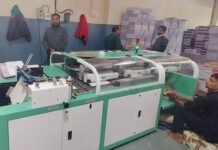The Covid-19 induced lockdown has severely impacted India’s newspaper industry primarily due to the disruption in distribution and logistics challenges and the steep drop in advertising in the April to June quarter. Although circulations have improved in recent weeks, they are still significantly down from pre-lockdown levels. However, some newspapers like Jagran utilized the pandemic to innovate on the logistics front and look for new opportunities.
According to Deepak Pandey, senior vice president, Jagran said that the newspaper collaborated with other newspapers such as Amar Ujala, The Hindu, Times of India, and Hindustan Times and formed a group to share knowledge during the lockdown. The news publishers shared market intelligence, made joint strategies, and shared costs, and best practices from markets.
“We realized that everybody was doing their own thing, which did not lead us anywhere. So we came together to drive a common strategy into the market,” Pandey said during the WanIfra India 2020 Printing eSummit.
Distribution has been gaining in importance as the news publishers try to ensure the last mile reach of their dailies on time. Pandey stated that even when the essential goods supply chains collapsed, newspaper distribution was not interrupted for even a single day despite the reduced circulation volume. “The pandemic has made us realize that logistics is the backbone of the newspaper business,” he added.
Teaming up with leading publishers helped reduce costs. For instance, they shared sanitation stations that other publishers could effectively use instead of each setting up their own. Also, since the publishers were open to sharing their market intelligence and best practices transparently, joint campaigns were organized collaboratively. Sharing taxis for shipping to the smaller cities and towns from the printing plants reduced costs by as much as 30%, and they were able to make this happen within the first 15 days of the lockdown coming into effect.
When the Coronavirus spread led to the closing down of a printing plant of one of the dailies, Dainik Jagran stepped in with a quick turnaround time of 1 to 2 hours helping it continue to print until the plant was reopened. There were also instances when to control several dailies’ printing costs, the entire printing was carried at the Jagran plant.
New marketing opportunities to reader households
The Jagran group also collaborated with non-newspaper companies to help them in their supply chain decision making. Jagran’s team helped a blue-chip consumer product company identify its distribution channel issues and provided field-level workforce and resources in support.
“We used our vendors and even our personnel to deliver their products directly to the customers’ homes. This helped the company reduce intermediaries and go deeper into their existing markets and enter new locations. We also engaged in brand and promotional activities on their behalf,” Pandey said.
According to Pandey, this collaboration is beneficial to both the consumer goods producer and the publisher if it is seen as a new business opportunity to get better ROI from the same household and increase income in difficult times. “Jagran has a new revenue model and a new learning curve. We are leveraging our distribution strength and creating a positive trade perception,” he said.

















thats great